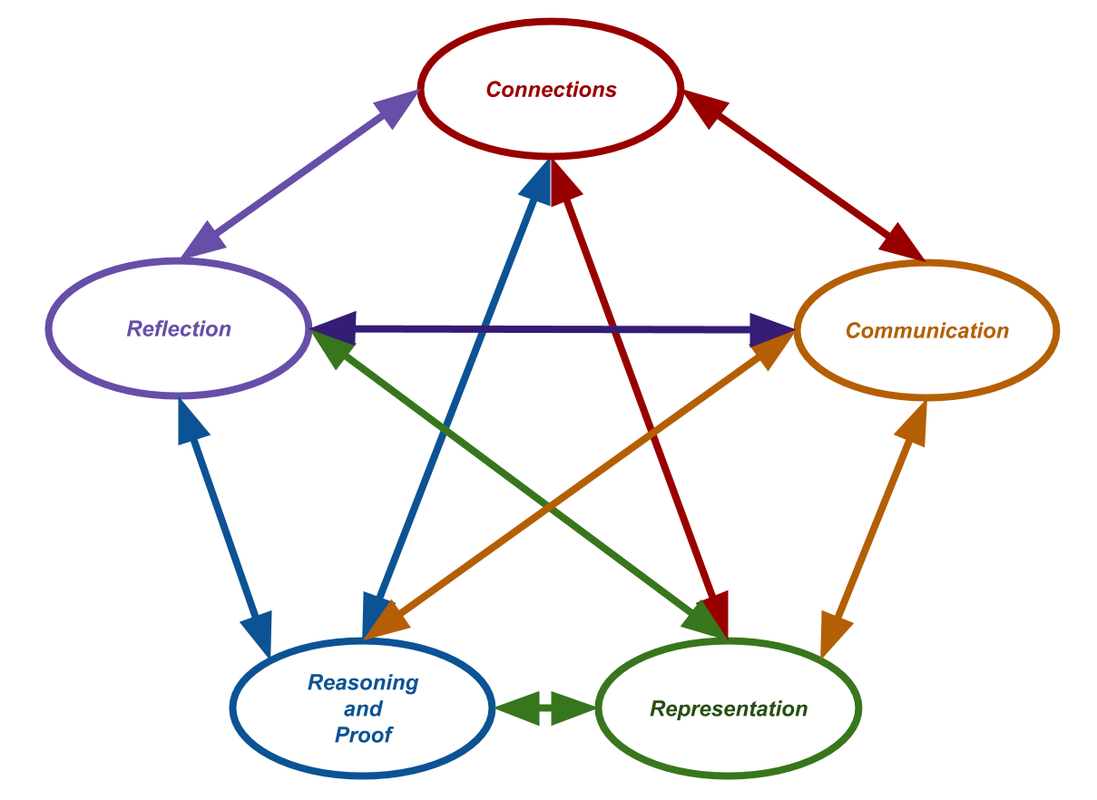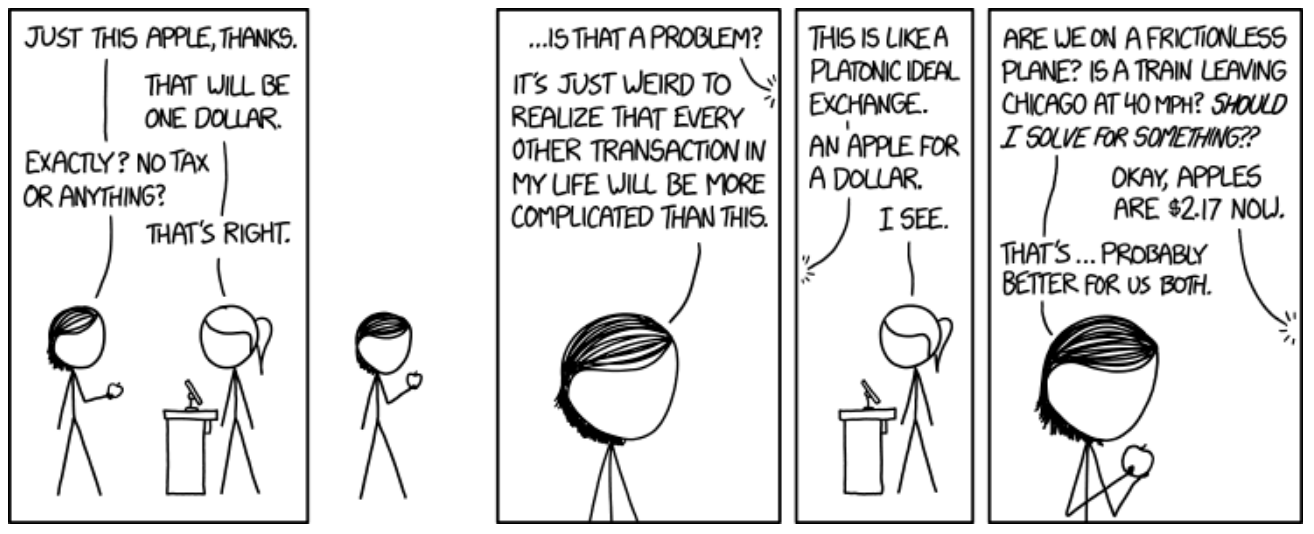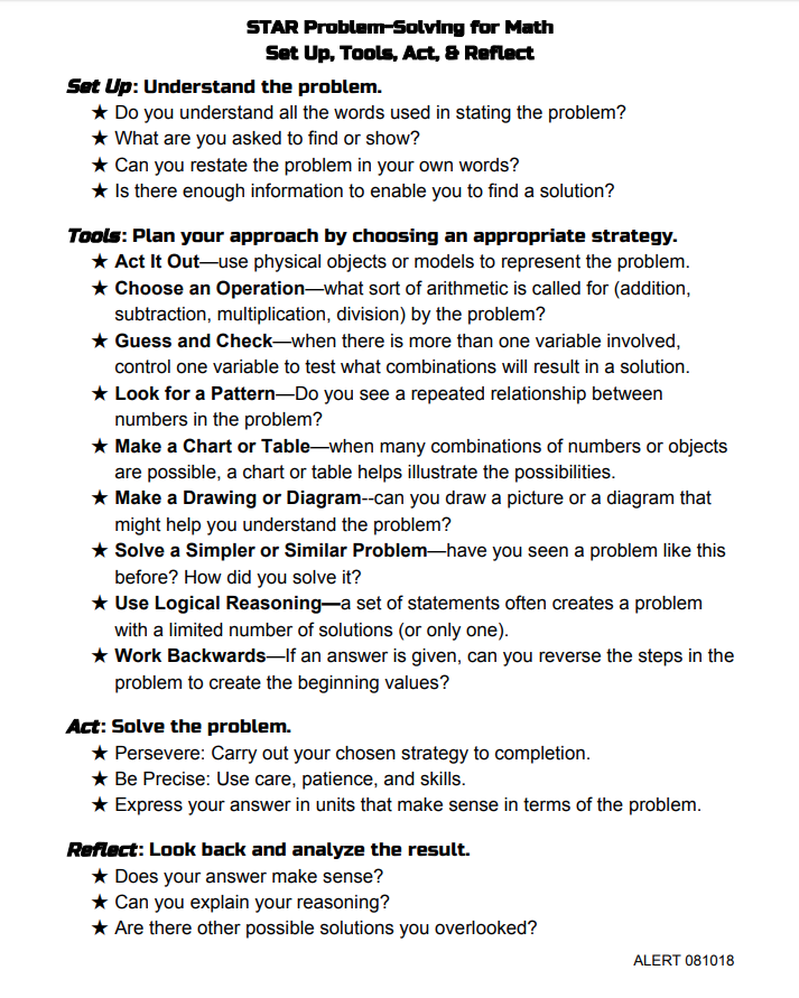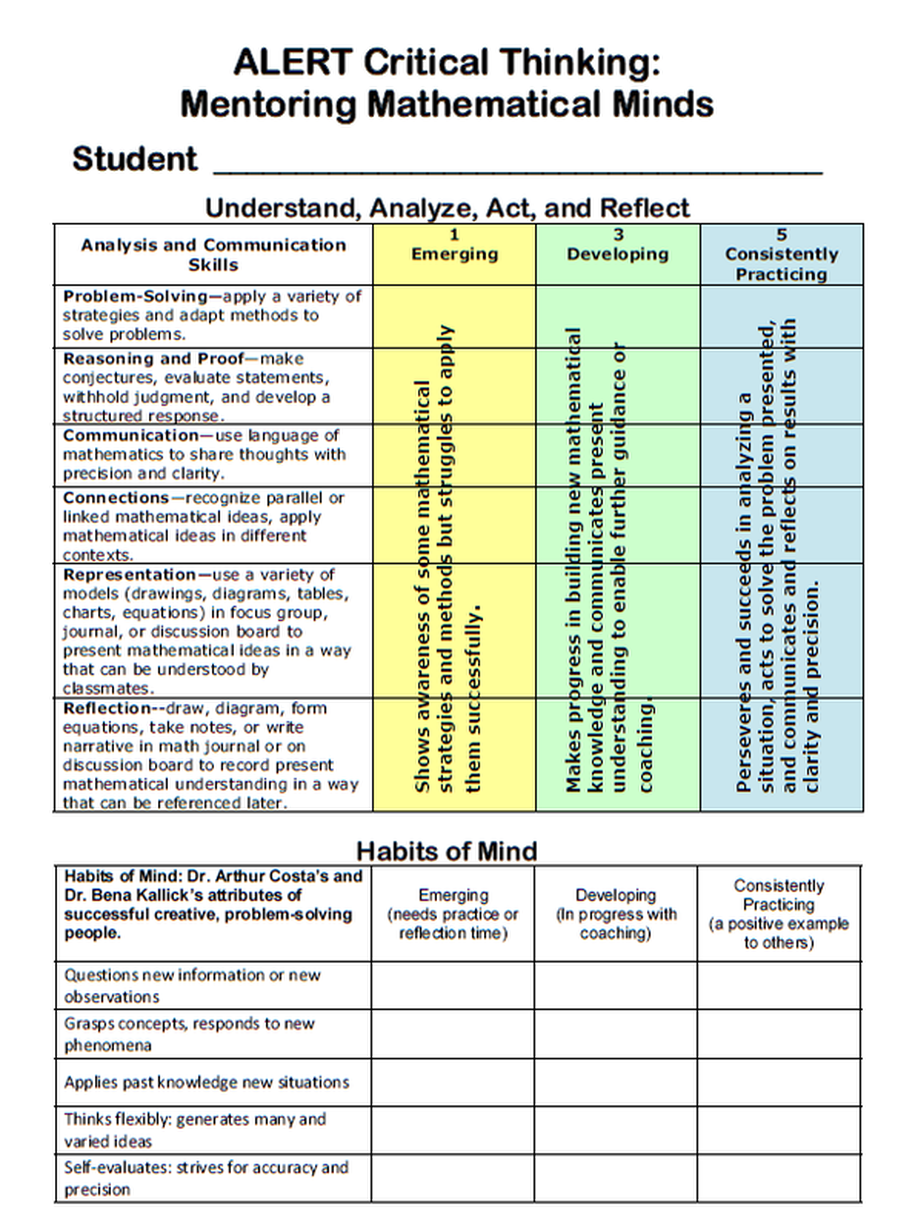STAR Problem-Solving for Math
Set Up, Tools, Act, & Reflect
xkcd comic by Randall Munroe
Set Up : Understand the problem.
- Do you understand all the words used in stating the problem?
- What are you asked to find or show?
- Can you restate the problem in your own words?
- Is there enough information to enable you to find a solution?
Tools : Plan your approach by choosing an appropriate strategy.
- Act It Out—use physical objects or models to represent the problem.
- Choose an Operation—what sort of arithmetic is called for (addition, subtraction, multiplication, division) by the problem?
- Guess and Check—when there is more than one variable involved, control one variable to test what combinations will result in a solution.
- Look for a Pattern—Do you see a repeated relationship between numbers in the problem?
- Make a Chart or Table—when many combinations of numbers or objects are possible, a chart or table helps illustrate the possibilities.
- Make a Drawing or Diagram--can you draw a picture or a diagram that might help you understand the problem?
- Solve a Simpler or Similar Problem—have you seen a problem like this before? How did you solve it?
- Use Logical Reasoning—a set of statements often creates a problem with a limited number of solutions (or only one).
- Work Backwards—If an answer is given, can you reverse the steps in the problem to create the beginning values?
Act : Solve the problem.
- Persevere: Carry out your chosen strategy to completion.
- Be Precise: Use care, patience, and skills.
- Express your answer in units that make sense in terms of the problem.
Reflect : Look back and analyze the result.
- Does your answer make sense?
- Can you explain your reasoning?
- Are there other possible solutions you overlooked?
STAR Problem-Solving Checklist
| star_math_strategies_081018.pdf | |
| File Size: | 160 kb |
| File Type: | |
M3 Math Dispositions
| 2018-19_m3_math.pdf | |
| File Size: | 203 kb |
| File Type: | |




